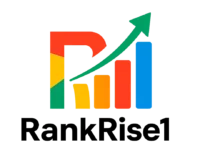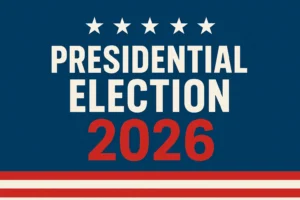US Presidential Election 2026: Key Insights, Candidates, and What to Expect
The US Presidential Election 2026 is already shaping up to be one of the most anticipated political events of the decade. With global attention, digital campaigning, and a deeply divided electorate, this election will play a crucial role in defining America’s political, economic, and social direction for years to come.
In this article, we’ll explore everything you need to know about the upcoming election — including potential candidates, policies, major voter issues, and how technology and media will influence the race.
What Is the US Presidential Election 2026?
The US Presidential Election 2026 is part of the broader United States elections, which include the race for the presidency, congressional seats, and several state-level positions. Americans will head to the polls to elect their next leader who will shape the country’s policies from 2027 onward.
The election follows the traditional four-year presidential cycle, where candidates from both major parties — the Democratic Party and the Republican Party — compete for the White House.
Historical Context and Political Climate
As the nation approaches 2026, the political climate is charged with debates over the economy, healthcare, climate change, and technology regulation. Public sentiment has become increasingly polarized, making the upcoming election more about vision and leadership than just party lines.
Key issues such as AI regulation, immigration reform, climate action, and foreign relations are expected to dominate political discourse. Voters are also looking closely at leadership qualities, integrity, and solutions for national unity.
Potential Candidates for the 2026 Election
While official candidates will be confirmed closer to the primaries, several political figures are already gaining attention from both major parties.
Possible Democratic Candidates:
- A former Vice President or Governor with national recognition
- Rising younger leaders advocating for climate and economic reform
- Strong female and minority candidates emphasizing equality and social progress
Possible Republican Candidates:
- A former governor or senator with conservative values
- Candidates promoting business-friendly policies and border control
- Younger politicians appealing to new-generation voters
It’s too early to predict the final nominees, but both parties are expected to bring dynamic figures to the race, representing America’s changing political landscape.
The Road to the White House: Election Process
Here’s how the US Presidential Election 2026 process will unfold:
- Primaries and Caucuses (Early 2026):
States hold internal elections to choose party nominees. - Party Conventions (Mid-2026):
Official nomination of presidential candidates and announcement of vice-presidential running mates. - General Election Campaign (Late 2026):
Nationwide campaigning, debates, and policy discussions. - Election Day (November 2026):
Citizens cast votes, which determine the Electoral College outcome. - Inauguration Day (January 2027):
The elected president takes office.
This process ensures both public participation and the formal electoral system outlined in the U.S. Constitution.
Related Resource
For a detailed breakdown of the 2026 U.S. elections, visit the following page:
👉 Wikipedia: 2026 United States Elections
This resource provides updates about all elections happening across states and territories in 2026.
Major Issues That Will Shape the 2026 Election
The top voter concerns expected to dominate the 2026 election include:
- Economic stability: Inflation, job growth, and wage equality
- Healthcare: Affordable access and post-pandemic recovery
- Climate change: Clean energy, sustainability, and global cooperation
- Technology & AI regulation: Privacy, automation, and social media transparency
- National security: Defense spending, immigration, and border policy
- Education: Digital learning, debt relief, and reforming public schools
Candidates will need to address these core issues to connect with a broad range of voters.
The Role of Technology and Media
The 2026 election will be one of the most digitally connected in U.S. history. Social media, artificial intelligence, and data analytics are transforming how campaigns engage with voters.
Platforms like X (formerly Twitter), TikTok, Instagram, and YouTube will play a significant role in shaping public opinion. Campaign teams are already preparing advanced digital strategies using AI-driven targeting and fact-checking tools to combat misinformation.
Internal & External Links
Internal Links (RankRise1):
External Links:
- White House Official Website
- Wikipedia: 2026 United States Elections
- CNN Politics
- Politico Election Tracker
Commercial Impact of the Election
Elections don’t just change politics—they affect markets, investments, and industries. Businesses and investors often adjust strategies based on anticipated policy shifts. For instance, environmental policies may drive growth in renewable energy, while tax reforms could impact small businesses and corporate profits.
Media organizations, polling agencies, and digital marketing firms also benefit commercially during election seasons due to increased advertising demand and audience engagement.
Navigational Tips: How to Stay Updated
- Visit RankRise1.com for regular election coverage.
- Follow reputable news sources like Reuters and Associated Press.
- Join political forums or discussions online.
- Subscribe to official candidate newsletters for updates.
Staying informed helps you understand not just who might win, but how the outcome will shape everyday life.
Top 10 References
- https://en.wikipedia.org/wiki/2026_United_States_elections
- https://www.whitehouse.gov
- https://www.nbcnews.com/politics
- https://www.cnn.com/politics
- https://www.politico.com
- https://rankrise1.com
- https://www.pewresearch.org
- https://www.nytimes.com/section/politics
- https://www.reuters.com/world/us
- https://www.apnews.com
Social Media Tags
#USPresidentialElection2026 #USElection2026 #RankRise1 #AmericanPolitics #ElectionNews #PoliticalTrends #USElection #WhiteHouse2026 #USVoters #DemocracyInAction
Schema Markup (JSON-LD)
{
"@context": "https://schema.org",
"@type": "Article",
"headline": "US Presidential Election 2026: Key Insights, Candidates, and What to Expect",
"description": "Comprehensive 2026 U.S. Presidential Election guide. Learn about potential candidates, major issues, election process, and how media and technology are shaping American politics.",
"author": {
"@type": "Person",
"name": "Rank Rise"
},
"publisher": {
"@type": "Organization",
"name": "RankRise1",
"url": "https://rankrise1.com",
"logo": {
"@type": "ImageObject",
"url": "https://rankrise1.com/logo.png"
}
},
"mainEntityOfPage": "https://rankrise1.com/us-presidential-election-2026",
"datePublished": "2025-10-03",
"keywords": "US Presidential Election 2026, US Election 2026, RankRise1, US politics, White House election, American democracy"
}
Final Thoughts
The US Presidential Election 2026 will not only decide the next leader of the United States but also determine the nation’s path in a fast-changing global environment. From policy debates to technological innovation, every aspect of this election reflects how democracy evolves in the digital age.
To stay informed about the 2026 election and other political updates, visit RankRise1.com — your go-to source for simplified, fact-based, and future-focused insights.

